Trees Birds Mammals Fish Amphibians Reptiles
Wild Algarve
Bookshop
Panellus stipticus (Bull.) P. Karst. - Bitter Oysterling
Phylum: Basidiomycota - Class: Agaricomycetes - Order: Agaricales - Family: Mycenaceae
Distribution - Taxonomic History - Etymology - Identification - Culinary Notes - Reference Sources
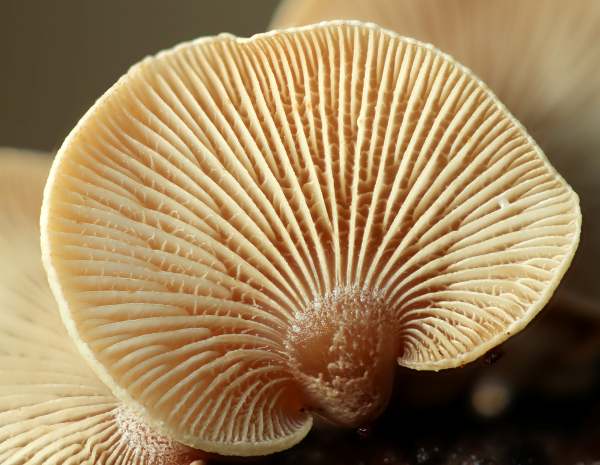
Seen from underneath, the Bitter Oysterling is a very attractive mushroom usually with distinctive cross veins and a very short tapering stem.
Distribution
In Britain and Ireland the Bitter Oysterling is widespread and fairly common. This mushroom occurs also throughout northern and central parts of mainland Europe and is also reported from the Far East as well as Australia, New Zealand and North America.
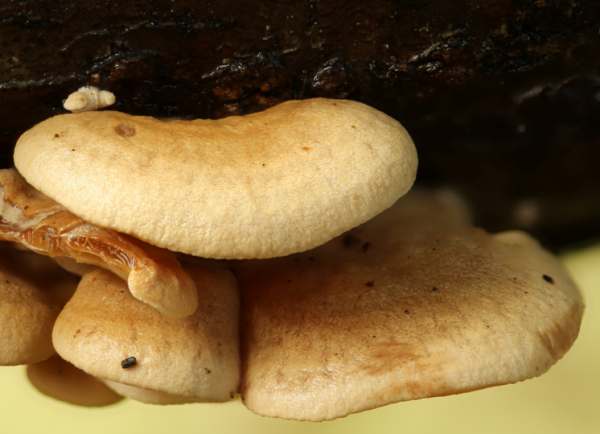
Taxonomic history
French mycologist Jean Baptiste Francois (Pierre) Bulliard described the Bitter Oysterling in 1773, giving it the binomial scientific name Agaricus stipticus . It was Finnish mycologist Petter Adolf Karsten (1834 - 1917) who in 1879 transferred this species to its present genus, thus establishing its currently-accepted scientific name Panellus stipticus.
Synonyms of Panellus stipticus include Agaricus lateralis Schaeff., Agaricus stipticus Bull., Crepidotus stipticus (Bull.) Gray, Panus stipticus (Bull.) Fr., Pleurotus stipticus (Bull.) P. Kumm., and Panus stipticus var. albidotomentosus (Cooke & Massee) Rea.
Panellus stipticus is the type species of the genus Panellus.
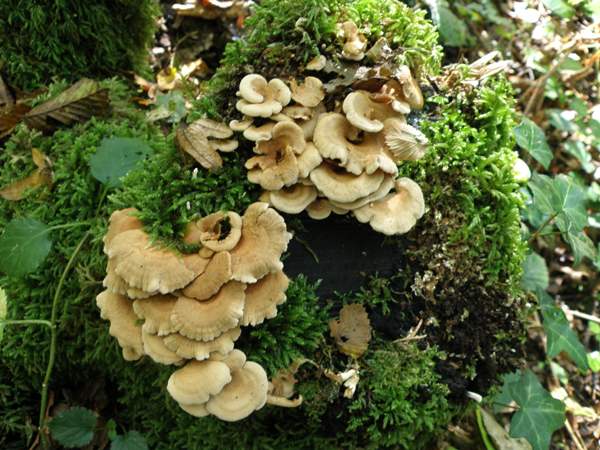
Etymology
The specific epithet stipticus refers to styptic properties (constricting damaged blood vessels and so stemming bleeding from wounds) ascribed to this mushroom.
Identification guide
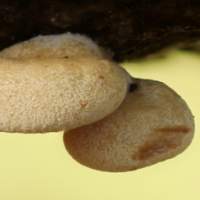 |
Cap
0.5 to 3cm across, kidney shaped to shell shaped with a tan woolly upper surface and, at least initially, an inrolled margin. The surfaces of fruitbodies become wrinkled and turn paler as they age.. |
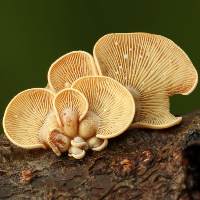
|
Gills
Pale tan, crowded, forked and usually with strong cross veins giving a reticulate (mesh-like) appearance. In some parts of North America they are reported to be luminescent (glowing greenish in the dark), but Bitter Oysterlings found in Britain and other parts of Europe are not known to glow in the dark..
Stem
Eccentrically or laterally attached, tapering towards the substrate, 3 to 7mm in diameter and 0,3 to 2cm long; tan to buff, covered with longitudinal silky fibrils; no ring. |
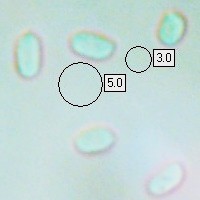 |
Spores
Ellipsoidal or slightly allantoid (sausage shaped), smooth, 4-5 x 2-3 µm; amyloid.
Spore print
White. |
Odour/taste |
Odour not distinctive; taste usually very bitter. |
Habitat & Ecological role |
Saprobic, growing in small tufts or scattered groups on fallen trunks, large branches and rotting stumps of dead hardwood trees, particularly oaks. |
Season |
Mainly autumn and early winter in Britain and Ireland. |
Similar species |
Crepidotus mollis is superficially quite similar and grows on dead wood, but its spore print is brown.
Sarcomyxa serotina usually produces larger fruitbodies and its gills are not cross veined.
Tapinella panuoides has yellowish veins and produces much larger spores. |
|
Culinary notes
These little fungi are bitter tasting as well as being too insubstantial to be of culinary interest. Bitter Oysterlings from some parts of the world they have been reported to cause vomiting.
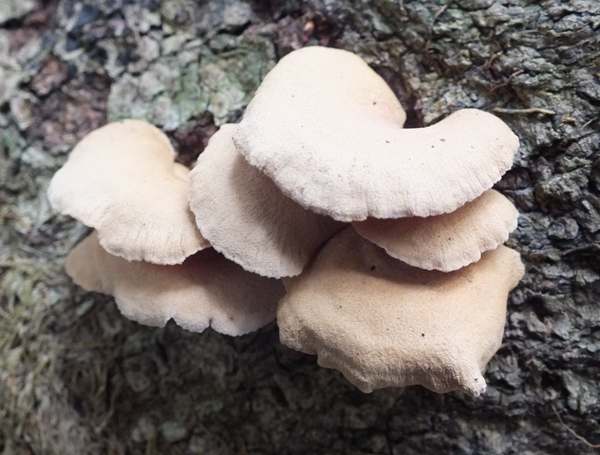
Reference Sources
Fascinated by Fungi, 2nd Edition, Pat O'Reilly 2016, reprinted by Coch-y-bonddu Books in 2022.
Funga Nordica: 2nd edition 2012. Edited by Knudsen, H. & Vesterholt, J. ISBN 9788798396130
Dictionary of the Fungi; Paul M. Kirk, Paul F. Cannon, David W. Minter and J. A. Stalpers; CABI, 2008
Taxonomic history and synonym information on these pages is drawn from many sources but in particular from the British Mycological Society's GB Checklist of Fungi.
Acknowledgements
This page includes pictures kindly contributed by David Kelly.
Top of page...
Fascinated by Fungi. Back by popular demand, Pat O'Reilly's best-selling 450-page hardback book is available now. The latest second edition was republished with a sparkling new cover design in September 2022 by Coch-y-Bonddu Books. Full details and copies are available from the publisher's online bookshop...